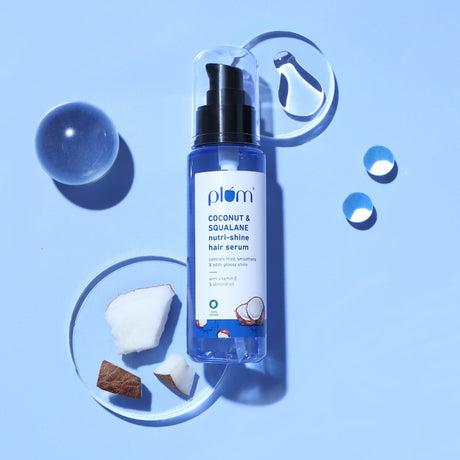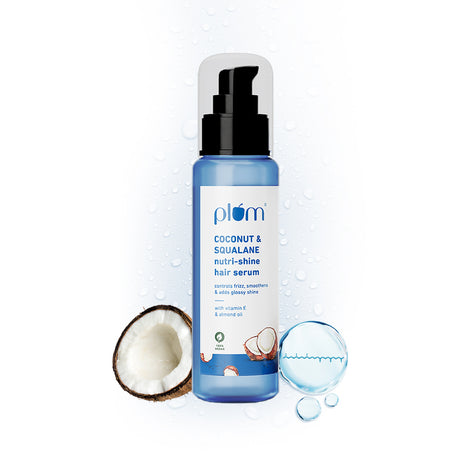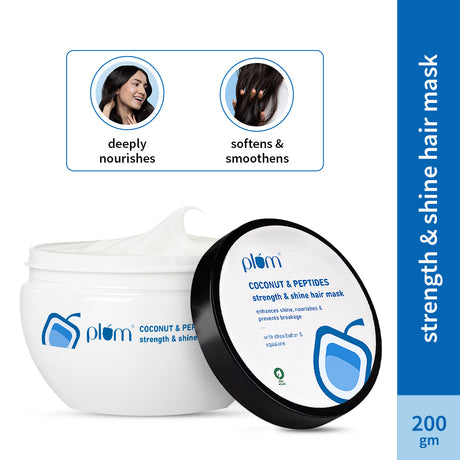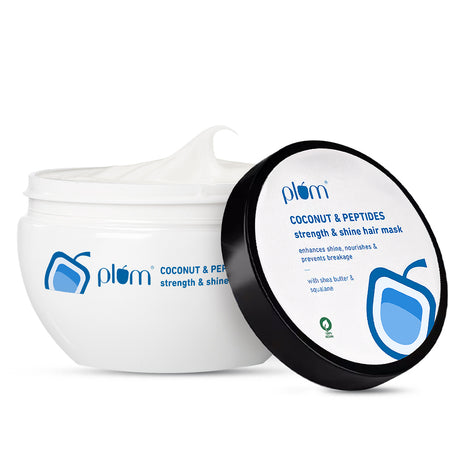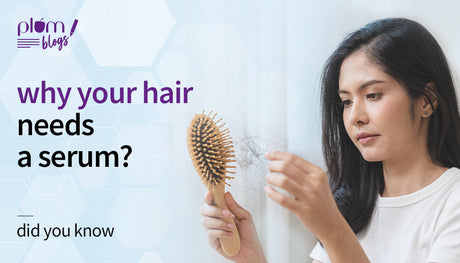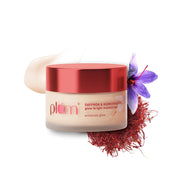
IN THIS ARTICLE
Does your hair soak up oil and conditioner like a sponge but still end up feeling dry or frizzy, leaving you wondering where all the nourishing product goes?
You’re not imagining it; your hair might have high porosity.
While most of us focus on hair type (curly, straight, wavy), another crucial factor in deciding how healthy, soft, or strong your hair feels is its porosity.
Porosity is the ability of your strands to absorb and retain moisture, which often determines their texture.
Understanding your hair’s porosity can completely change how you care for it.
Here is all about what hair porosity is and how you should care for your high porosity hair.
What is hair porosity, and why does it matter?
Hair porosity refers to how easily your hair absorbs and holds moisture. It depends on the condition of your cuticle layer, which is the outermost part of your hair shaft.
If the cuticles lie flat, moisture stays locked in (low porosity). If they’re raised or damaged, moisture escapes easily (high porosity).
In simple terms, if you have low porosity hair, moisture has a hard time getting in. But if you have high porosity hair, moisture gets in easily, but also leaves quickly.
Knowing your hair porosity will help you choose products and routines that actually work for your hair instead of just layering more products that don’t do any good.
Types of hair porosity
There are generally three types of hair porosity:
-
Low porosity: Tight cuticles that resist moisture and product absorption.
-
Medium porosity: Balanced structure, holds moisture well.
-
High porosity: Raised or damaged cuticles that absorb moisture easily but lose it just as fast.
How to test your hair porosity at home?
Here’s a quick test:
-
Take a clean strand of hair (free of oil or conditioner).
-
Drop it into a glass of water.
-
Watch where it goes.
-
If it sinks quickly, you likely have high porosity hair.
-
If it floats in the middle, your hair has medium porosity.
-
If it floats on top, you’ve got low porosity hair.
-
How will you know if you have high porosity hair
Here are some signs and symptoms of high porosity hair:
-
Hair feels dry soon after washing or oiling.
-
Frizz appears easily, especially in humidity.
-
Hair tangles or breaks easily.
-
Hair color fades quickly after dyeing.
-
It takes very little time to dry after a shower.
These are signs that your hair’s cuticle layer is raised or damaged, allowing moisture (and nutrients) to escape too fast.
How to take care of high porosity hair
Taking care of high porosity hair can be slightly tricky. High porosity hair needs moisture and protection, not more buildup.
Here’s how to care for it the right way:
-
Use sulfate-free, moisturizing shampoos. Harsh surfactants strip natural oils, worsening dryness. Opt for moisturizing shampoos, infused with ingredients like peptides or coconut milk.
-
Deep condition regularly. Look for masks rich in proteins and butters to seal gaps in the cuticle layer. Opt for deep conditioning once a week.
-
Seal with oils or serums. Lightweight oils (like argan, marula, or grapeseed) or a hair growth serum can help lock in hydration while strengthening strands. 0.3% Glycolic Acid & Cherry Blossom Frizz Control Serum Creme
-
Protein-rich diet: Include plant-based proteins like lentils, chickpeas, tofu, quinoa, and seeds in daily meals to support a protein-rich diet.
-
Avoid heat styling and harsh chemicals. These lift cuticles further and worsen porosity.
-
Rinse with cool water. It helps flatten the cuticles and seal in moisture. Avoid washing your hair with very hot water.
-
Use a satin and silk pillowcase: Use a satin or silk pillowcase and scrunchies to reduce friction and retain moisture.
Common mistakes to avoid with high porosity hair
Avoid doing these things if you have high porosity hair:
-
Over-washing or shampooing daily
-
Skipping conditioner or deep masks
-
Using heat styling without protection
-
Rubbing hair harshly with a towel (opt for a microfiber or cotton T-shirt instead)
-
Ignoring leave-in serums or oils
High porosity hair treatment options
If regular hair care routine has failed to improve the condition of your hair and regulate frizz, here are a few other ways you can manage them:
-
Protein treatments: Protein treatments can help temporarily fill cuticle gaps and improve structure.
-
Bond-building treatments: These treatments strengthen internal hair bonds damaged by coloring or heat.
-
Hair growth serums: A good serum infused with peptides, biotin, or plant-based actives helps boost scalp health and strengthen roots, improving density and overall hair strength over time.
-
Oiling & scalp massage: Hot oil massage helps promote blood circulation and better absorption of nutrients.
Best products for high porosity hair
To manage your high porosity hair, opt for:
-
Moisturizing shampoos: Coconut Milk & Peptides Shampoo
-
Protein-rich conditioners or masks: Coconut & Peptides Hair Mask for Dry Hair
-
Lightweight sealing oils (argan, marula, jojoba): 0.3% Glycolic Acid & Cherry Blossom Frizz Control Serum Creme
-
Hydrating hair growth serums with peptides or biotin: Rosemary & 3% Redensyl Hair Growth serum
-
Leave-in conditioners to prevent moisture loss
High porosity hair needs consistent moisture, gentle care, and protective layering to stay strong and smooth.
Instead of adding more products, focus on what your hair truly needs - hydration that stays locked in, nourishment that strengthens from within, and protection that prevents further damage.
With the right care routine (and a good serum to seal it all in), your hair can regain its softness, shine, and natural resilience - one wash day at a time.
FAQs
What are home remedies for high porosity hair?
Use natural oils like argan, olive, or coconut to seal moisture, followed by aloe vera or yogurt masks to soothe and hydrate strands.
Is high porosity hair good or bad?
It’s neither - it just needs the right care. High porosity hair can look shiny and voluminous if nourished properly.
What’s the best hair mask for high porosity hair?
The best hair masks are those rich in proteins, ceramides, or shea butter for repair and hydration.
How to increase porosity if it’s too low?
Gentle steam treatments or mild exfoliating shampoos can help open cuticles for better absorption.
How long does high porosity hair take to dry?
Usually faster than other types, often within 15–30 minutes, depending on length and thickness.
What causes high porosity hair?
You could naturally have high porosity hair. Or it could be due to frequent coloring, heat styling, UV exposure, or harsh treatments that damage the cuticle layer.



